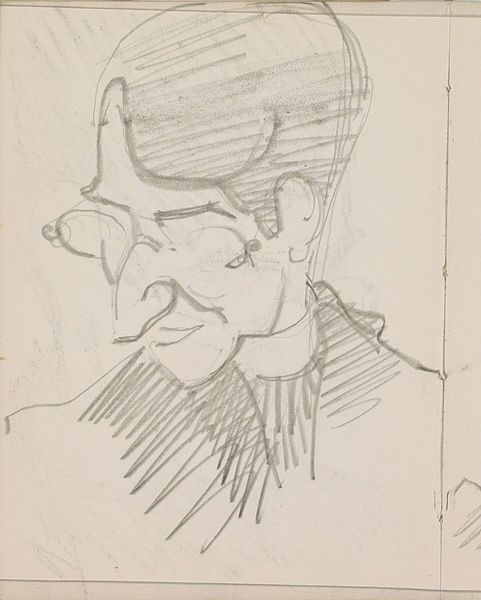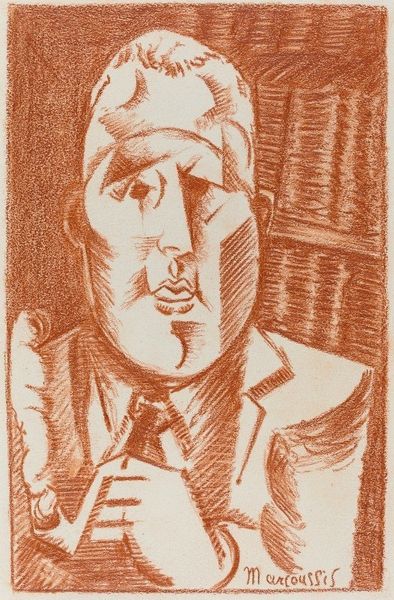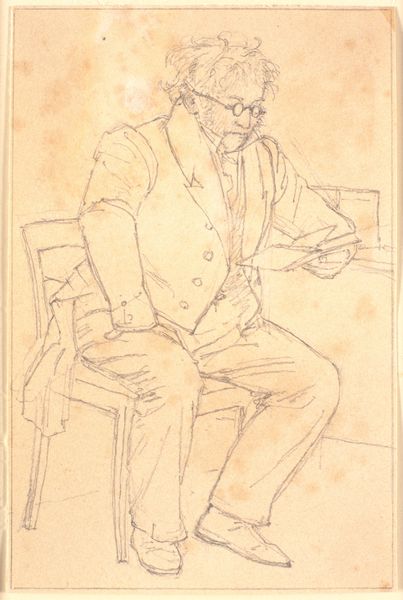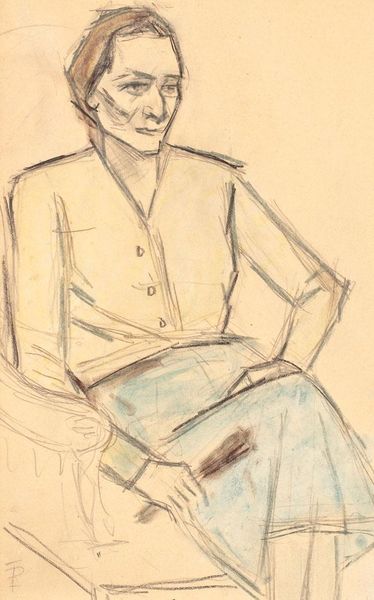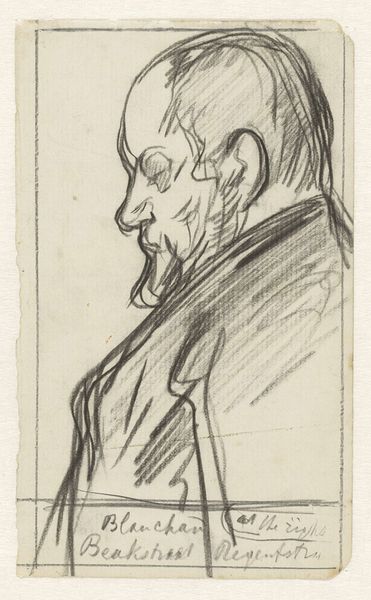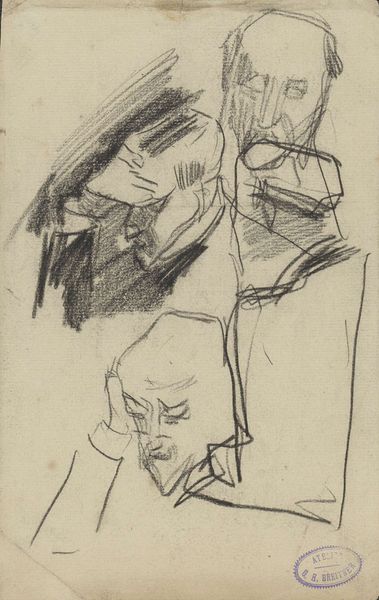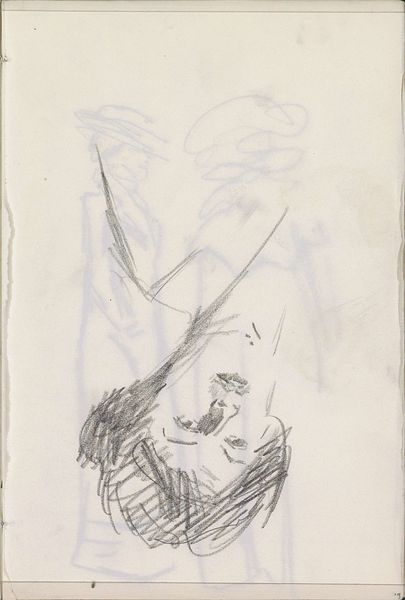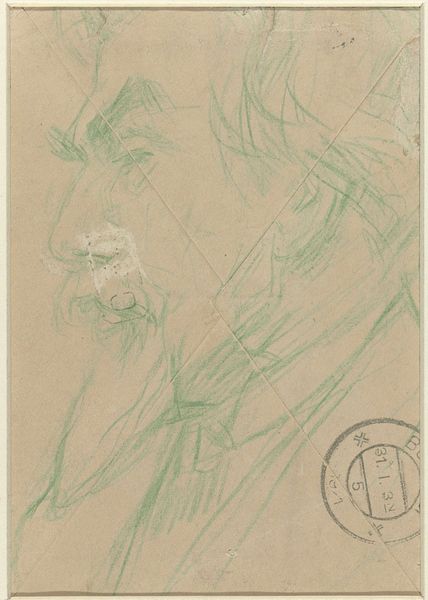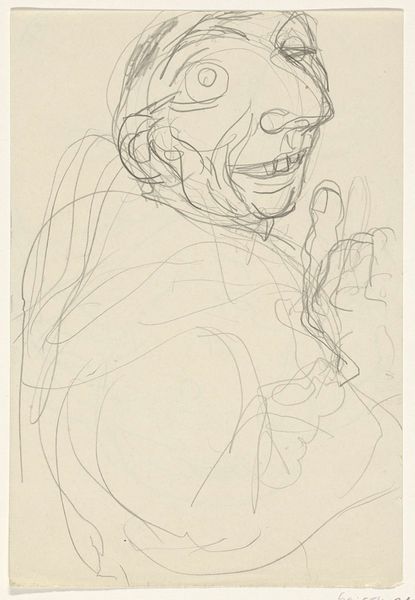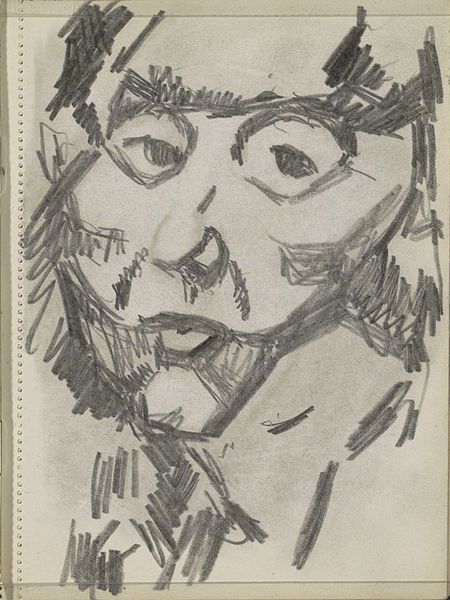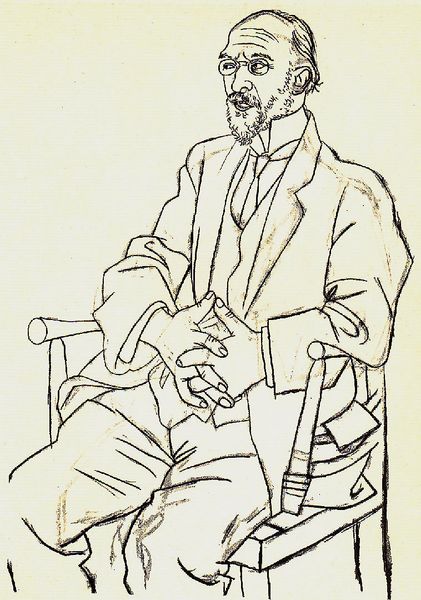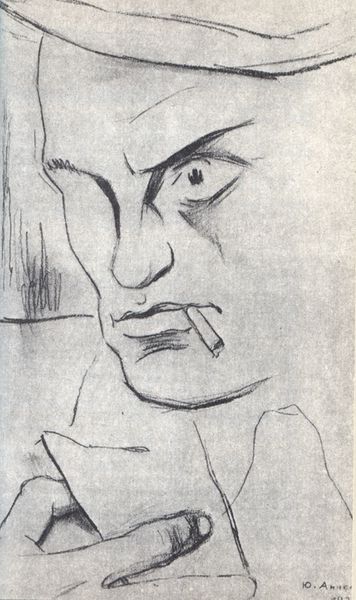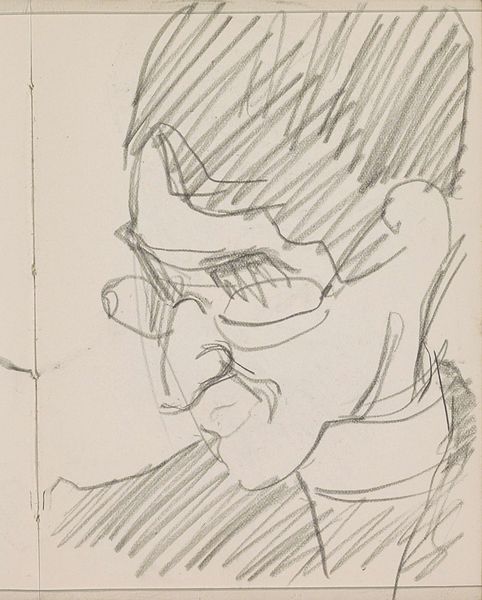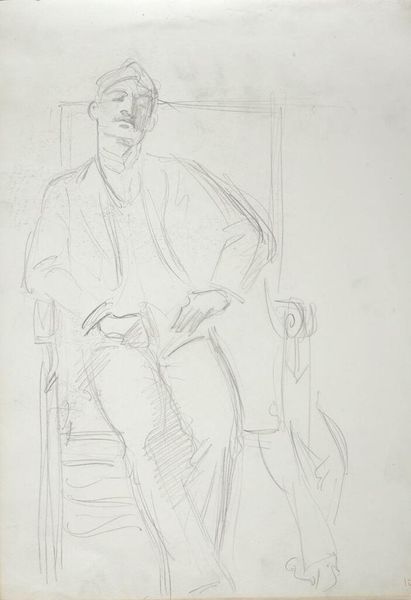
Copyright: Alla Horska,Fair Use
Curator: Here we have Alla Horska's "Taras Shevchenko. Sketch for the Play by Ivan Drach 'Knife in the Sun'," created in 1963 using charcoal. A striking piece, wouldn't you say? Editor: It's quite intense. The subject's glare is immediately unsettling. The rapid, almost frenzied lines lend it a certain raw energy, but the light seems to be fighting with darkness. It leaves me feeling conflicted. Curator: Horska's choice of charcoal is crucial here. Its inherent roughness and ability to create strong contrasts directly serve the Expressionistic style, amplifying the emotional weight. The sketch becomes a tangible record of the artist's process and intent. Editor: Agreed, but the composition itself is masterful. The figure dominates the frame, yet the negative space and dynamic lines create a visual tension. Semiotically, that glare is hard to ignore—it screams defiance, but I struggle to decode what message the artist aims to get across with it. Curator: Given the political context of Soviet Ukraine at the time, that defiance resonates deeply. Horska and other non-conformist artists were challenging the strictures of Socialist Realism. The materials—the readily available, almost crude charcoal—were, in a way, a quiet act of resistance. Access to other materials was severely limited by the Soviet regime and imposed aesthetic style. Editor: I find it impressive how she suggests form and volume simply through the density and direction of her lines. The materiality is of great significance to that choice of line as the texture gives it dimension as it all accumulates on the page. Curator: This work shows the connection of Horska's political involvement. From my perspective, the labor involved is important to think about in this context, particularly when the artist puts themself at risk, especially when it comes to works honoring Shevchenko as such imagery of him would have come under close scrutiny by Soviet cultural officials at that time. Editor: So, the defiance extends beyond the purely visual then? This lens reveals deeper layers of political commentary and an almost tactile sense of protest embedded in the mark-making. This all certainly offers a richer experience than I expected when first gazing upon his angered face. Curator: Exactly. It transforms our appreciation when you consider the artist's socio-political engagement and material choices under duress and in collaboration to memorialize another Ukranian artist. Editor: Yes, indeed. The raw expressiveness intertwined with skillful control reveals how to appreciate beyond an angry face.
Comments
No comments
Be the first to comment and join the conversation on the ultimate creative platform.
